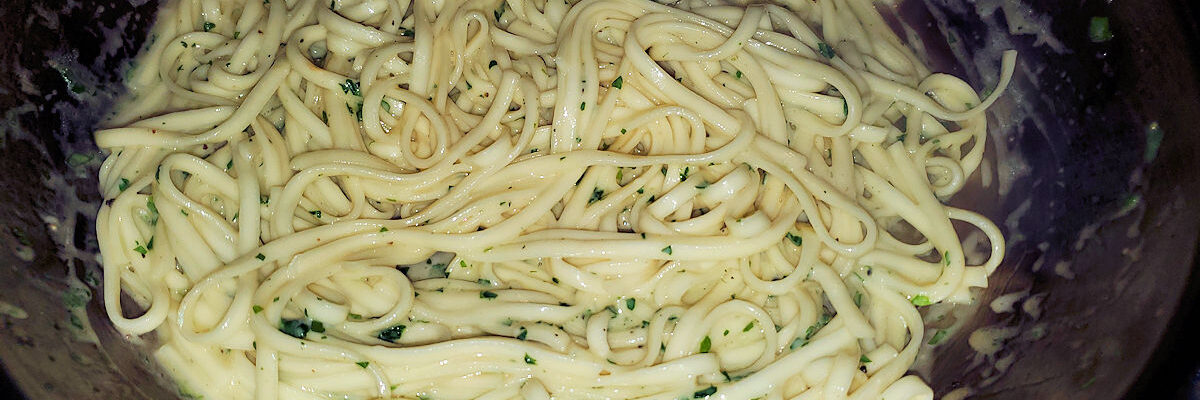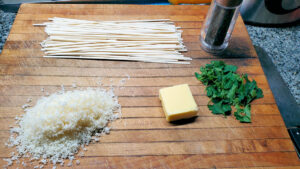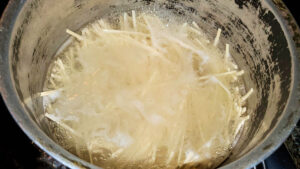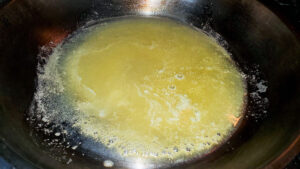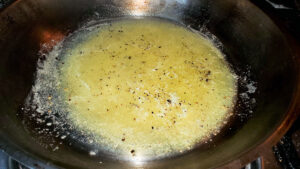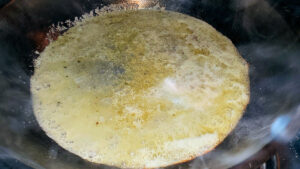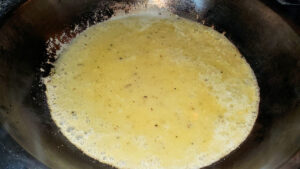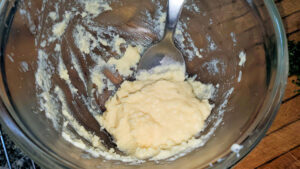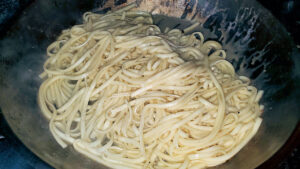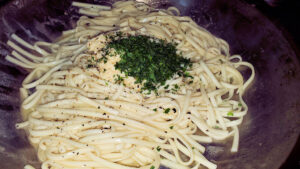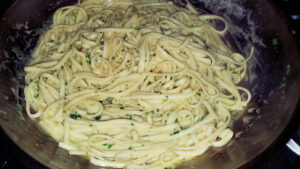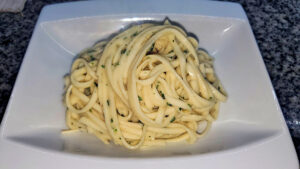It’s a pasta dish that’s probably as contentious as putting pineapple on pizza. It’s a guilty pleasure for even the naysayers, who probably eat it with a large napkin draped over their head to hide their faces from God as they indulge in crunching ortolans. It’s an “Italian pasta” that, for the most part, you can’t find in Italy, and when you do, it’s not the pasta that those of us in the Americas, in particular, grew up with. It’s Fettuccine Alfredo, and today, it’s on the menu.
I’m not going to swear to the veracity of this origin story. Supposedly, in 1914, Chef Alfredo de Lelio, put this pasta together for his wife Ines, who was ill, as a simple dish that she could manage to keep down. The restaurant, later moved to a new location and called Alfredo alla Scrofa, still exists in Rome, and serves the pasta. Also, the original location exists… still?… again?… and is called Il Vero Alfredo, and also serves the dish. It now comes with a bit of a show, tossing the pasta in a depression carved out of a wheel of parmigiano. If one follows their recipe, there’s literally nothing in the dish but fettuccine, butter, and parmigiano.
Beyond this particular restaurant, and a scattering of others who make their own version of the dish, it doesn’t really exist in Italy. Except it does, because you can find pasta al burro, pasta in butter, in many places around Italy, mostly as a kid’s pasta. Parmigiano on the side for the kids to add as much as they like. Kind of like kids everywhere who want their spaghetti with butter and a little cheese on the side.
Now, let’s talk momentarily about the American version (and I’m including all of the Americas, because I’ve seen this dish throughout my travels, from Canada to Argentina and Chile). How did it come to the US? The origin story is that movie stars Mary Pickford and Douglas Fairbanks were in Rome in 1920 on their honeymoon. They tried this dish, loved it, and brought the idea back to Hollywood, where it was re-created by the chef at the famed celebrity haunt Musso & Frank Grill. But, they got it wrong. The whole “creaminess” that we’ve been looking at in recent pasta posts got reinterpreted as “add cream”.
And, you know, the American idea of taking a dish bathed in butter and cheese and adding heavy cream to it, and often even egg yolks, because… not enough fat!… is practically a given. That version is a delicious indulgence, no doubt, but for me, and many, it’s just overly rich and heavy. Plus, somehow, people think that if they add salmon or chicken to it, it will suddenly become healthy. Let’s move on to my version, which adds a little more flavor than just butter and cheese, but is relatively true to the “original”.
Fettuccine, grated parmigiano, butter, parsley, black pepper.
Boiling water, again, just enough to cover the pasta, and with the salt at about one tablespoon per liter of water.
Melt butter over low heat and add some cracked pepper to it. Not a lot, this shouldn’t be a peppery dish, and the original doesn’t even include it. Let the flavor infuse a bit, then add a ladle or two of the starchy pasta water and whisk well to emulsify it.
Remember to make your cheese cream so that it doesn’t clump up – add the starchy pasta water a tablespoon at a time, stirring well, until the cheese melts into a creamy mass. This is basically just the reverse process of adding the un-cheesed pizza to the wheel of parmigiano and gradually incorporating cheese into the pasta as you toss it and it melts into the sauce. Most of us don’t have a big wheel of parmigiano at home.
When the pasta is about two minutes short of being cooked, add it to the butter emulsion and begin to toss well. Add more pasta water if needed, just to finish cooking it through and create that clingy butter sauce.
Add the cheese cream and the chopped parsley (also not in the original), and toss and stir vigorously to incorporate it all.
And, serve.
Is it as “creamy” as the cream (and possibly egg yolk) version? No, obviously not. But it’s delicious, still an indulgence – it’s still bathed in butter and cheese – though not nearly the fat bomb that the more common American version is. And it still goes with a grilled chicken breast or salmon fillet.
